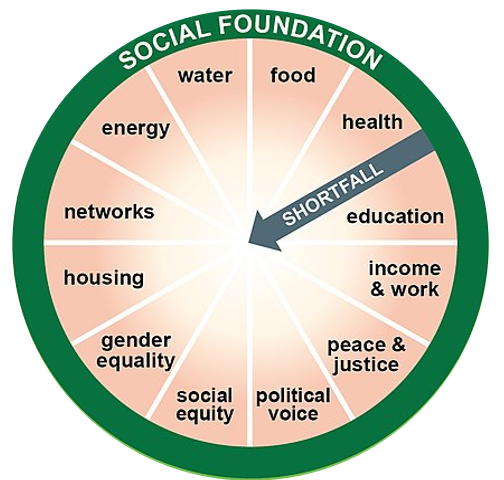The social foundation is inspired by the Sustainable Development Goals of the United Nations (UN). What do Economics students need to know about the social foundation? Is there any overlap with the economic concepts you teach today? How does the Doughnut Framework affect the way you teach these concepts?

The social foundation covers 12 dimensions of basic welfare. When you go over these dimensions, you are likely to think at some point that you already cover that dimension in the economics you teach today. You may think ‘labour market’ when you pass ‘work’, or ‘GINI coefficient’ when you pass ‘income’. Which overlaps do you notice?
Even when there is overlap between the social foundation and the economics you teach today, the way you teach it could be changed when you look at it from the perspective of a ‘foundation’. How can this perspective change the way you bring across economic concepts you teach today?
With the Doughnut Model at the heart of this curriculum, it is evident to ask the question how the social foundation and the ecological ceiling are interconnected. Which skills do teachers and students alike need in order to fully understand this interconnectedness?
Although the Sustainable Development Goals, defined by the UN, provide useful targets for the dimensions of the social foundation, governments are free to make their own choices. This is a choice embedded in a nation’s value system, decided on by political forces, influenced by interest groups. How much do students need to understand about the politics of economics?
The UN also gathers data on the targets it has set. This serves you with a trove of data and information that you could put to practical use in the classroom. Should the use of actual data be a part of the curriculum?
Would you like to read some of our answers to these questions and get inspired along the way? Then read our blogposts on the social foundation.
